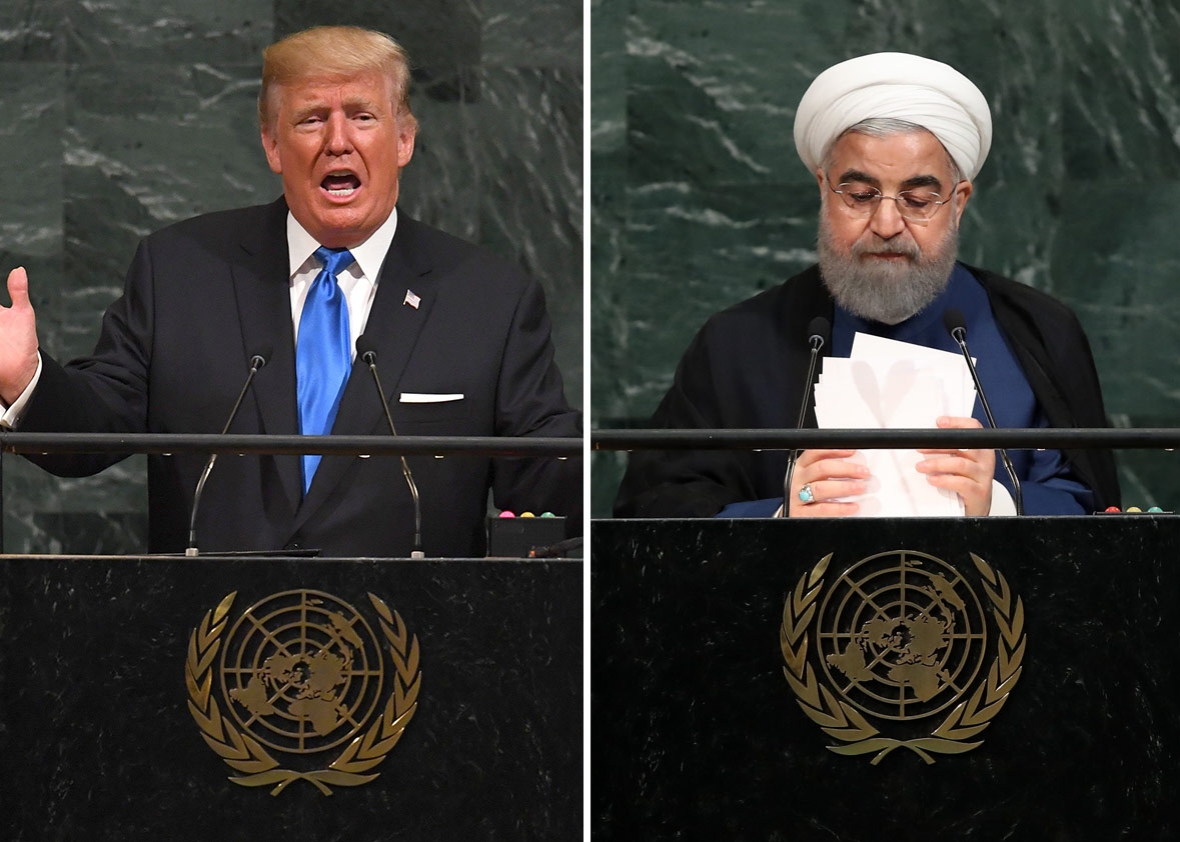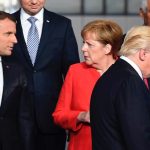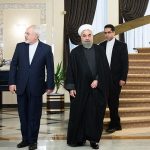By Kenneth Katzman
The objective of any sanctions regime is not to punish the target country or weaken its economy as an end in itself. Rather, a sanctions campaign—including the Trump Administration’s policy of “maximum pressure” on Iran—is meant to change the target country’s behavior. Such a result could come from a reduction in its capabilities to implement actions the United States finds objectionable or from a negotiated agreement under which a country limits or ends its offending activities.
A wide range of observations and data support the assertion that the Trump Administration’s maximum pressure campaign against Iran has not, to date, produced any tangible strategic gains for US policy. However, Tehran’s reported willingness to negotiate at least some changes beyond those stipulated in the 2015 multilateral nuclear deal (the Joint Comprehensive Plan of Action, or JCPOA) could yet produce an outcome that the administration could plausibly claim as a policy “success”—even if far more modest than the one it had forecast. At the same time, US policy has increased the risk of a direct US-Iran armed conflict, the dimensions and adverse consequences of which are potentially widespread and severe.
The Trump Administration’s Maximum Pressure Policy
Even though President Donald Trump consistently identified Iran as a major threat, both as a candidate and after taking office in early 2017, the policy of applying maximum pressure on the Islamic Republic began in earnest with the May 2018 US withdrawal from the JCPOA. In concert with the pullout, the Trump Administration reimposed all US secondary sanctions on Iran’s core economic sectors that had been suspended to implement the JCPOA. The administration justified its actions on the assertion that the lifting of sanctions required by the 2015 nuclear agreement was preventing the United States from applying the necessary economic leverage to compel Iran to retrench in the region, limit its development of ballistic missiles, and accept even stricter limits on its nuclear activities. Importantly, the administration reasoned that reimposing sanctions would limit Iran’s role in funding its proxies in Lebanon, Iraq, Yemen, Gaza, Bahrain, and even Afghanistan.
The secondary sanctions that were reinstated on Iran as of November 2018 have the following objectives:
- To exclude from the US financial system foreign banks that conduct transactions with sanctioned Iranian entities or persons.
- To virtually exclude from the US market any international energy firm that invests in Iran’s energy sector or sells Iranian goods so that Iran could expand that sector.
- To threaten sanctions on the banks of any country that refuses to reduce oil purchases from Iran, and on firms that ship Iranian oil.
- To impose strict US sanctions on transactions with Iran in precious metals, certain minerals, Iran’s currency, automobile production equipment, shipping, shipbuilding, shipping insurance, Iran port operations, and industrial software.
In late April 2019, the administration decided to go well beyond the reimposition of the pre-JCPOA US sanctions and institute measures that would apply severe pressure on Iran’s economy, centered around reducing Iran’s oil export income to the extent possible. These included the following policies:
- As of May 2, 2019, the administration ended a US sanctions exception for any country to purchase Iranian oil, aiming to completely end Iran’s oil exports.
- On May 8, President Trump issued Executive Order 13871, blocking the US-based property of persons and entities determined by the administration to have conducted significant transactions with Iran’s iron, steel, aluminum, or copper sectors.
- On September 20, the Treasury Department designated Iran’s Central Bank as a terrorism-supporting entity under Executive Order 13224. The new sanctions go beyond existing provisions that bar all US transactions with Iran’s Central Bank or penalize foreign banks that deal with it. In addition, and perhaps most significantly, this new designation does not carry the humanitarian exemption that is associated with other US sanctions in place on the ICB.
Economic Effects of Sanctions
President Trump has asserted that the reimposition of sanctions has made Iran “a much different country.” Indeed, there is no question that the maximum pressure campaign has damaged Iran’s economy significantly. In October 2019, the International Monetary Fund revised downward its estimates for Iran’s GDP for the March 2019–March 2020 period to a shrinkage of about 9.5 percent—a downturn bordering on economic depression. In congressional testimony on October 16, 2019, Ambassador Brian Hook, the State Department’s top Iran official, said the administration’s own estimates indicate Iran’s economy could even shrink as much as 14 percent in that same period.
The termination of oil purchase sanctions exceptions has driven Iran’s vital oil exports to lows not seen since the Iran-Iraq War in the 1980s, when Iraqi jets bombed Iran’s oil export terminals constantly. Absent any oil-related sanctions, Iran’s baseline crude oil exports are about 2.5 million barrels per day. Nevertheless, Iran only exported about 1.1 million bpd in the first week of October, which is far below what Iran requires to avoid significant financial austerity. The new sanctions have also complicated Iran’s Central Bank’s ability to secure non-sanctioned goods such as foodstuffs and medicines. In fact, the current sanctions are more severe than the ones imposed by the Obama Administration to coax Iran to negotiate the JCPOA.
However, it is also true that Iran’s economy is not in a state of collapse. Iran still maintains tens of billions of dollars in accounts worldwide that it can draw on to pay for imports. It continues to export minerals, construction materials, luxury goods, automobiles, and other goods to willing importers in its immediate neighborhood and beyond. In late October 2019, the Central Bank governor said that he had been able to stabilize the value of Iran’s currency, the rial, since sanctions were reimposed in late 2018. Further, Iran’s network of cleric-linked foundations (bonyads) and other social services networks, by all accounts, have limited the direct effects of the economic downturn on the population.
Prospects for US Policy Success
Aside from pointing out the economic effects of the maximum pressure policy, the Trump Administration has asserted that its policy is succeeding in reducing the strategic threat posed by Iran. Ambassador Hook asserted in his testimony that the policy was producing resource constraints on Iran’s capabilities, such as its cyber command, and on its ability to fund its regional proxies such as Hezbollah and Shia militias in Syria. He also claimed that the policy had caused Iran to reduce its military budget significantly, including a 17 percent reduction in funding to the IRGC during 2019–2020.
The administration’s assertions of the value of extensive sanctions on Iran can be refuted by visible observations. That reasoning would have predicted that Iran’s regional influence would have suffered setbacks when global sanctions were increased significantly during 2011–2016. Yet, events and trends demonstrate that Iran’s core policies are unaffected by the economic pressure of sanctions.
In 2013, Iran was able to intervene in the Syrian civil war to help the Assad regime maintain its grip on power. Iran was able to send 2,500 Islamic Revolutionary Guard Corps – Quds Force (IRGC-QF) advisors to stiffen the Assad regime’s defenses as well as Hezbollah fighters and some 8,000-12,000 Shia militiamen from Afghanistan, Yemen, and Iraq. Nor did sanctions prevent Iran from providing Assad with billions in credits since 2012, plus additional support such as gratis oil.
In 2014, with Obama Administration sanctions still severely pressuring Iran’s economy, Iran was easily able to intervene in Iraq to help the beleaguered Baghdad government turn back the challenge from the Islamic State organization, which at one point got too close to the Iranian border. Iran sent IRGC-QF advisors to organize and arm a variety of Iran-backed Shia militias and to recruit additional Shia fighters to fight alongside the Iraqi military. In parallel, the United States sent forces to help reorganize the Iraqi Army, which virtually collapsed upon the Islamic State’s onslaught, and to conduct air strikes against the group.
Sanctions also did not stop Iran from taking advantage of the battlefield success of the Houthi movement in Yemen. In 2015, still under severe international sanctions, Iran began arming the Houthis, including with short-range ballistic missiles, to confront a Saudi-led Arab coalition that was assembled with the express purpose of rolling back Iran’s regional influence. Iran has armed the Houthis to the point where they are able to launch missiles into Saudi Arabia and threaten shipping in the vital energy chokepoint of the Bab al-Mandab Strait. More than four years later, the Saudi-led coalition has begun to fracture and Saudi Arabia appears to be looking for an exit from the conflict there.
There is no question that Obama-era sanctions did contribute to Iran’s decision to negotiate and accept the JCPOA. However, developing a nuclear weapon has never been core to Iran’s foreign and defense ideology. If it were, Iran likely would have put far more effort and resources into achieving that goal than it did. It also would have been much farther along toward that end by the time that sanctions were tightened significantly as of 2010. Iran was willing and able to bargain away any immediate drive to achieve a nuclear weapons capability in exchange for sanctions relief.
Evidence that the Trump Administration’s maximum pressure campaign has not changed Tehran’s core behaviors—notwithstanding the financial difficulties cited by Ambassador Hook—has mounted in recent months:
- Iran and Hezbollah remain heavily engaged in Syria. Iran has been able to build a military infrastructure there that has forced Israel to acknowledge its frequent bombings in the country.
- Iran has continued to supply the Houthis with ballistic missiles that they have used to significant effect against airports and energy infrastructure in southern Saudi Arabia.
- Iran remains heavily engaged in Iraq by arming and advising a wide range of increasingly influential Shia militia groups and their increasingly powerful commanders. One strike on Saudi oil infrastructure in May 2019 was launched from Iraq, confirming reports in late 2018 that Iran has supplied some of its Iraqi proxies with ballistic missiles and armed drones. Israel also reportedly affirmed this threat by striking an Iran-controlled installation in Iraq in July 2019.
- In response to the maximum pressure campaign in mid-2019, Iran has been able to attack Gulf shipping, seize some Gulf ships, and down an advanced US unmanned aerial vehicle.
- Iran has continued to develop ever more precise ballistic and cruise missiles, which it can use or, even more significantly, transfer to its regional allies and proxies. Iran used the cruise missiles it has developed—to devastating effect—against critical Saudi infrastructure on September 14, shutting down about half of all Saudi oil production until early November. The strike demonstrated that Iran’s military technology has been significantly underestimated by US and other western officials. Iran apparently reverse-engineered Soviet-era cruise missiles it acquired many years ago, producing Iranian versions with names such as the Meshkat, the Soumar, the Qods-I, and the Ya Ali.
- Iran has continued to develop and test, although with perhaps mixed results, longer range missiles such as its Khorramshahr and its space launch vehicle, the Simorgh.
At the same time, there are indications that the Trump Administration’s policy might potentially bring significant benefit. In August 2019, by sending Foreign Minister Mohammad Javad Zarif to the site of the G-7 summit in Biarritz, France, Iran signaled a willingness to negotiate a revised JCPOA that might involve new Iranian concessions, such as on Tehran’s development of ballistic missiles. There also appeared to be French-driven momentum, prior to the September 14 Iranian attack on Saudi Arabia, behind a possible meeting between President Trump and Iranian President Hassan Rouhani at the UN General Assembly meetings in late September. No summit occurred there, despite French efforts, but the United States continues to offer a presidential meeting with Iran without preconditions.
Achieving sanctions relief is certainly the main motivation behind Iran’s possible reconsideration of its opposition to opening up the JCPOA to new terms. However, none of the contemplated concessions by Iran involve accepting limitations on its regional activities, which are at the core of Tehran’s ideology and its strategy for defending the revolutionary regime.
Kenneth Katzman is a specialist on Iran at the Congressional Research Service. He wrote this article in a private capacity. Published with permission from Arab Center Washington DC.






Wonder what the author (one of the true experts on this subject) thinks about how Iran relates to the very recent, dramatic sustained demonstrations in Lebanon and Iraq -specifically renouncing the role of sectarian Islam in daily civil government. Islam had been suppressed in Iran since at least the US imposition of the Shah in 1953. But the authority over (and thus responsibility for) every aspect of daily life and government inevitably tarnishes and corrupts what should be the higher, transcendent role of the Mosque. We have seen several nascent movements to liberalize this initially extremely conservative Islamic embrace. Look how fast the Shia of Iraq has (again) shifted core identity. Iran went from enemy (1980) to ally (2003) to enemy (2019).
I was working on Iran Desk in my first month at Commerce Dept. in October 1979 when the Embassy was seized and we really began the sanctions regime. First was stopping import of Iranian oil. The rest is history.
As usual, someone who doesn’t like US policy, uses “Iran” as an excuse to make his argument.
Use another country.
Or at least criticize the Ayatollah regime as well. Maybe, just maybe their 40 year sanctions, on poor secular non-violent Iranians, would be a better topic to write on? Or would that make the US administration look good?
The people of Iran need to be freed from such horrid vile oppression, and not writing about your fellow human beings is just wrong.
It starts by not accepting these Ayatollahs as representatives of Iran. Accept a non-violent secular Iranian opposition.
The author is an intelligent man, why can’t he do that?
‘Limited utility’? You’re too kind. How about completely counterproductive, and self-defeating? Work of massively untalented amateurs? Ludicrously inept? I could go on, but I’m sure you get the message.
Odyssios
Yasoo.
US is trying to destroy the Islamic Republic.
They have failed.
Now they are in this long war.
This is all about Israel, and has always been about Israel. US interests are irrelevant. The Israelis prefer sanctions as a second choice to outright war between the US and Iran which they’d much prefer (along with the Saudis) because as long as there are sanctions, Iran and the US are not talking and so there’s less risk of Iran and the US getting along. THAT is the “existential threat” that Iran poses to Israel: that the US and Iran would start to get along